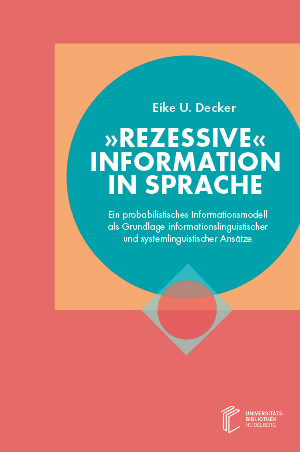
How to Cite
License

This work is licensed under a Creative Commons Attribution-ShareAlike 4.0 International License.
Identifiers
Published
»Recessive« Information in Language
A Probabilistic Information Model as the Basis of Informational Linguistics and Systems Linguistics
This book presents a language model based on information and systems theory. Language is understood as a dynamic system that processes information. The elements of this system are connected by weighted relations. These relations and their weights are changeable and allow a probabilistic analysis of language production. This model opens up new ways of analyzing language and the development of new flexible Natural Language Processing technologies by distinguishing between linguistic information that is perceived (“linguistic phenotype”) and information that is not perceived (“recessive information) and by arguing that language has to be seen as a probabilistically organized information system.


